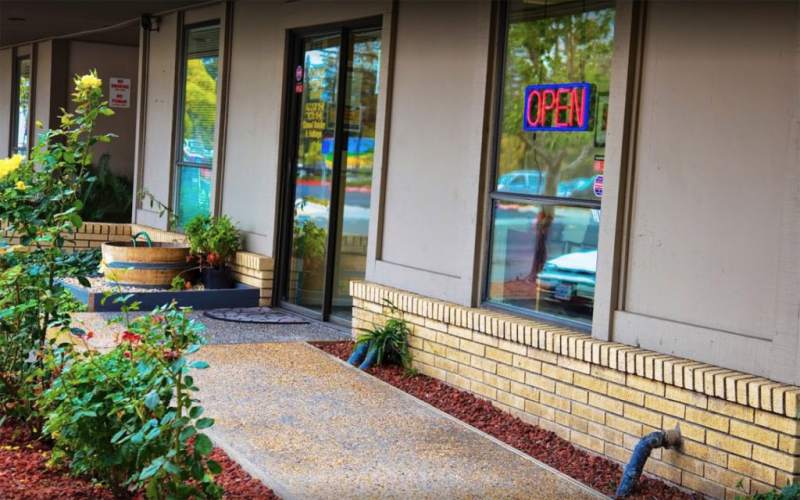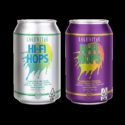California cannabis sellers are facing a harrowing decision this week: Sell much of their inventory at fire-sale prices, or dispose of any remaining products — from joints and edibles to topicals and flowers — that don’t comply with rigorous new state testing and packaging laws.
“If it’s not out of here by July 1, we have to have it destroyed at our own cost,” said Eli Melrod, co-owner of Solful cannabis dispensary in Sebastopol, who has been selling much of his current inventory at cost just to get rid of it before Sunday.
“We’re literally having liquidation sales going on all week, because we don’t want to have to destroy it,” he said.
Six months after the legal sales of recreational marijuana began, the California Bureau of Cannabis Control is implementing tighter control over cannabis products sold to the public. New rules include lab testing, child-resistant and tamper-evident packaging, dosage limits on edibles and a cadre of other requirements that range from font-sizes on package labeling to lengthy warning statements.
Many from the cannabis industry, however, say that there’s been little time to make major changes, and much of the business and state regulatory framework hasn’t even been built.
“We can’t send it back up the supply chain, we can’t even send it back for repackaging. It’s crazy. There will be thousands of perfectly good products that will be destroyed because of regulations,” said Melrod. “The state has deadlines they have to hit that were legislated, but no one is able to meet them. Everyone is racing to these deadlines, but its just a big mess we’re all trying to navigate through,” he added.
“We’re as prepared as you can be, but even the largest brands in the industry are still struggling to get compliant. It’s troubling how much there is to manage, and for a lot of small operators, it’s going to be really hard to make it through this transition,” Melrod said, adding, “I think that these regulations and cost structures have put an unfair burden on small operators. In Northern California, where we have such vibrant businesses, I hate to see them go under or into the black market.”
Edible cannabis products are facing some of the most difficult hurdles, with limited access to facilities to make the product, expensive testing and new rules on the amount of THC allowable — 10 mg per serving or 100 mg per package. Additionally, candies — which are the most popular edibles — cannot be appealing to children (like brightly colored gummy bears) and must be sold in opaque packaging, another new requirement.
“It’s a really big investment, and not a lot of people have that capital,” said Brandon Levine, executive director of Mercy Wellness in Cotati, who is also working to meet upcoming compliance laws. “Now we only have a handful of brands, where we used to have options of hundreds of edibles.”
Independent lab testing requirements are another major hurdle, according to both dispensary owners.
One of the rallying cries of the state-regulated system was to eliminate dangerous contaminants like pesticides, herbicides and other toxins that can be found in marijuana plants. In states like Oregon and Washington, packaging includes state testing results. In California, there has been little incentive to test cannabis until now, because it can be very expensive for growers and lead to an unsellable crop.
“We’re just now seeing cultivators actually testing product,” said Levine. “In first few months, we had a hard time getting cultivators to get proper testing done.”
Batch testing can be upwards of $1,600, according to Levine, nearly 5 times what it used to cost.
Only a limited number of internationally certified, independent labs are set up and ready to do the painstaking testing, which measures toxins in parts per trillion, a process far more stringent than similar testing on other agricultural crops.
Packaging has been another troublesome issue.
Every cannabis item sold to the public must be in child-resistant containers. While packaging from the pharmaceutical industry has provided some guidelines, like pill bottle caps, adapting things like beverage cans hasn’t been so easy to figure out.
Kial Long, vice president of marketing for Santa Rosa-based CannaCraft, said that some of their child-resistant packaging has been challenging to envision, like the soda cans that will hold their new Hi-Fi Hops sparkling THC water, made in collaboration with Lagunitas. The beverage contains no alcohol, but is made with hops, water and 5 or 10 mg of THC.
Hi-Fi Hops will be released in late July after the final packaging has been approved to be in compliance with new regulations. Other CannaCraft packaging, like that for their concentrates, has been in the works for months.
“We are preparing to lose most of the product line for the last six months due to packaging and testing,” said Levine. “We have a lot of product that was purchased during the grace period (from Jan. 1, 2018, to July 1, 2018) that won’t meet the new standards. Most of the companies we work with have not had the opportunity to work through their old packaging yet,” said Levine.
“We own our own packaging company but with new state regulations and people buying all this child-proof packaging, there’s a shortage on lids. If we don’t have the lids, we can’t sell the product,” said Levine.
“There’s a real shortage coming,” said Levine, saying that so little product has gone through all of the compliance requirements that it could be weeks or months before California sees its legal cannabis market rebound. It’s an opportunity for the black market to surge, which is exactly what the state is trying to avoid.
Soful’s Melrod agrees: “People are confused as to why stuff is out of stock, and its a lot of work for us to manage those expectations. We’re looking forward a month or so and getting into August when things will calm down,” he said.
But what’s equally challenging, say both dispensary owners, is educating consumers.
“All of this (regulatory change) goes into the wholesale cost, and we have to adjust our business to try to absorb that cost. We’re doing what we can to not pass it on, because we get blamed for being greedy and adding to the price, but we’re not the ones who add all the taxes,” said Levine. “We are following what the state regulates us to do.”











